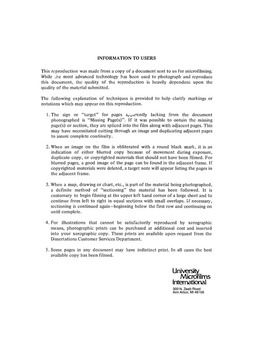| dc.contributor.author | Mainville, Stephen, | en_US |
| dc.date.accessioned | 2013-08-16T12:28:44Z | |
| dc.date.available | 2013-08-16T12:28:44Z | |
| dc.date.issued | 1982 | en_US |
| dc.identifier.uri | https://hdl.handle.net/11244/5033 | |
| dc.description.abstract | This study examines the connection between language and horror in Poe's horror tales, generally termed the arabesques, which, like Poe's poems, attempt to bring about the effect of beauty that Poe regarded as the aim of poetry. The world of these tales is a world, I argue, riddled with images of language, of print, created by the juxtaposition of black and white, the two colors which permeate Poe's tales. The paradox is that in fact what Poe does--or tries to do--is to use language to transcend itself in bringing about the effect of beauty. | en_US |
| dc.description.abstract | I explore Poe's arabesques in light of what Jacques Derrida calls "the division of discourse, " the division which language creates between man and the world. The arabesques deserve special attention in regard to the division of discourse and to the relation between language and horror, between language and the void. The play between language and the void serves as the precarious center for the discussions, the first of which examines The Narrative of Arthur Gordon Pym as a tale that questions the possibility of ever achieving unity in a world of language. The second discussion views The Journal of Julius Rodman along with Pym, and suggests that the division between pretext and text, the meaningful but uninterpretable and the interpretable, is a concern central to the two tales. The last three chapters examine the bereaved lover tales, the murder tales, and the remaining horror tales, respectively. In these chapters, unity is discussed in terms of presence and absence, memory, naming, and knowledge. All the chapters have a focus on print and language imagery, those recurring images of black and white that permeate the tales. Poe was submersed in a world of print, and it is not surprising that his work reveals the nature of the medium that was, essentially, his lifeblood. | en_US |
| dc.format.extent | 227 leaves ; | en_US |
| dc.subject | Literature, American. | en_US |
| dc.title | Language and the void : | en_US |
| dc.type | Thesis | en_US |
| dc.thesis.degree | Ph.D. | en_US |
| dc.thesis.degreeDiscipline | Department of English | en_US |
| dc.note | Source: Dissertation Abstracts International, Volume: 43-06, Section: A, page: 1973. | en_US |
| ou.identifier | (UMI)AAI8225510 | en_US |
| ou.group | College of Arts and Sciences::Department of English | |
